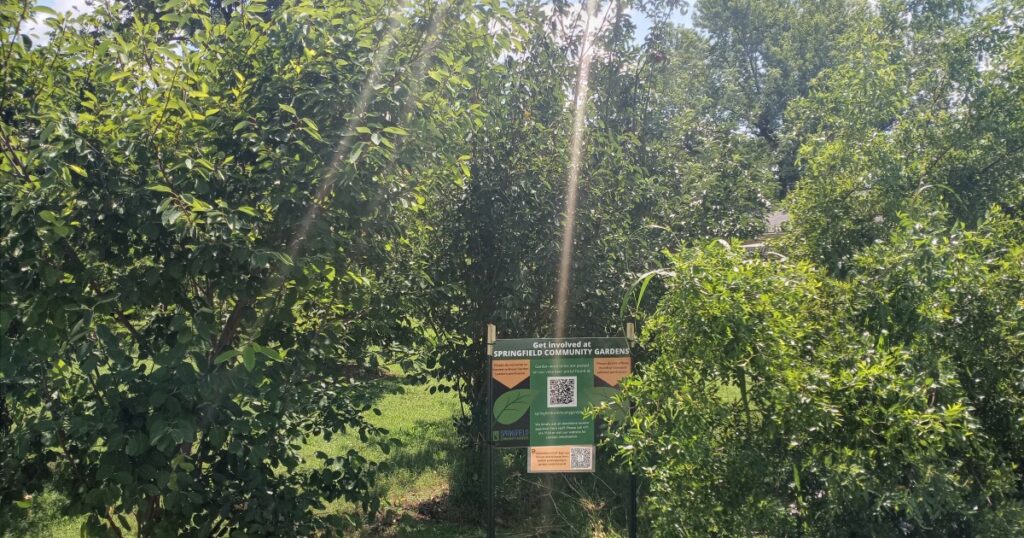An unassuming plot of land on Rogers Street in North Springfield is slowly growing into a food forest.
Located in a residential neighborhood just off the Greenway trail, the Rogers Community Food Forest’s tree canopy is tall enough to stand out among its neighbors.
Since the city donated the 0.22-acre vacant lot in 2017, the plot, which is home to more than 20 trees, shrubs and bushes, has been the low-key development of the Springfield Community Garden.
1/3 — Drone shot from the west.jpg
Drone photograph taken looking east shortly after the food forest was planted in 2017.
Ben Tegeler / Springfield Community Garden
Image 2 of 3 — PXL_20240617_171013420.jpg
Ripe apples on the branches at Rogers Community Food Forest.
Anna Withers / Springfield Community Garden
3 of 3 — PXL_20240617_171252479.jpg
Pear trees spread out in the background.
Anna Withers / Springfield Community Garden
The community garden has been supported by grants from Luckys and the USDA Sustainable Agriculture Research and Education Program, and currently produces a variety of fruits, including gooseberries, hazelnuts, persimmons, jujubes, and apples, each selected for its location and environment.
Ben Tegeler is an ecological designer with Ozark Mountain Permaculture. He helped start and maintain the property, and he said this kind of long-term, low-maintenance cultivation starts with proper planning. Tegeler explained, “Selecting the right cultivars for the Ozark Mountains, for the humidity, cold, and temperature changes, and the right underground rootstocks to deal with the clay soil and compaction, because there were homes here once. Doing a thorough site analysis, understanding what was here, planting the right plants in the right places, and making sure you have a yield. So that’s what food forests and permaculture are all about.”
Maintenance at this point simply involves checking the edible forest, lightly pruning, and mowing. Mowing has knocked over one or two small plants. There is no irrigation, pesticides, or fertilization, but the plants were given an organic compost tea during planting to encourage growth. Now that the canopy has started to grow, there are plans to plant some shade-loving plants.
Maile Auterson, the community garden’s executive director, said that while the food forest is primarily intended to serve the neighborhood, it also shows that similar cultivation is possible on land of almost any size. She hopes the forest will serve as a source of inspiration. “Really what we’re trying to do is think in new ways about urban space and community space and the intersections between them,” she said.
Auterson said the community garden has no plans to add more food forests at this time, but she hopes to see more in more areas. She has heard the Rogers Food Forest is being used. Tegeler said gooseberries seem to be the most popular, and she was pleasantly surprised that most of the ripe persimmons were harvested last year. The apple trees are just starting to ripen.
Anyone interested in volunteering, has questions about the Rogers Community Food Forest or would like to know what plants would be suitable for their home can contact Springfield Community Gardens at springfieldcommunitygardens.org.


